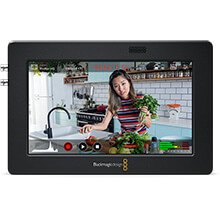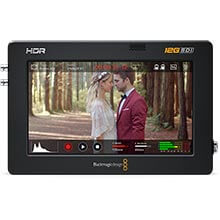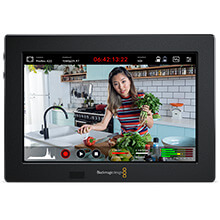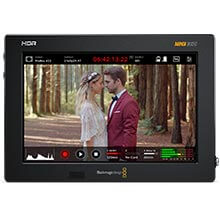
What’s the difference between Video Assist 3G and 12G?
The reason behind the launch of the Video Assist 3G range was to provide customers with a monitor-recorder at a much lower cost.
At first glance the 12G and 3G models look the same and they have more in common features than you would expect. It’s important to know what’s different under the hood and why there’s such a price difference. So, the question is: which is right for your needs: Video Assist 12G or 3G?
Looking at our comparison matrix, the two most striking differences are 4K recording and display brightness.
High and Bright
A 300-nit display on the 3G version undoubtedly makes it less usable under the summer sun without a shade but for indoors use it’s going to be very usable.
Brightness, however, isn’t just about avoiding glare. It’s also essential for supporting high dynamic range monitoring. This is where (apologies) the 12G version shines. It supports the P3 colour space for a wide colour gamut plus REC 2020, HDR10 and Hybrid Log Gamma recording. That’s important if your work is destined for playback on higher end displays.
If you think this is case closed, bear in mind that there is an advantage to a lower brightness screen: runtime on battery. Although we haven’t done any tests yet, we expect it run for much longer on its NPFs. If you’re using a Video Assist as a test device for broadcast or AV or regularly shoot remotely on location, this could be an important factor.
4K Recording
Both the 12G and 3G models support 10-bit ProRes and DNx recording from HDMI or SDI. The 12G adds 4K recording, and, crucially, the superb 12-bit Blackmagic RAW format with selected cameras. To handle the faster data rates required, the more expensive versions feature both UHS-II SD cards and external recording to a USB flash drive.
Five or Seven Inches?
While the Video Assist 12G clearly has superior features for most applications, don’t forget that there are also differences between the 5” and 7” models. The larger models (12G and 3G) both feature dual SD cards slots so you can swap out any full cards even during recording, allowing infinite length recording.
The larger chassis also allows for extra connectivity, such as the Lanc control cable and mini-XLR inputs for external professional microphones such as the Azden SGM-250MX.
For more information please contact our Sales Desk:
+44 (0)1457 851000 | sales@holdan.co.uk.
11 Apr 2024
YoloLiv Instream Installed at the TikTok Korea Headquarters
03 Apr 2024
Atomos In the Clouds: Redefining Video Production Efficiency
27 Mar 2024
NDI and IP-enabled workflows from Panasonic
27 Mar 2024
Mastering Post-Production: DaVinci Resolve’s AI Innovations for Content Creators








